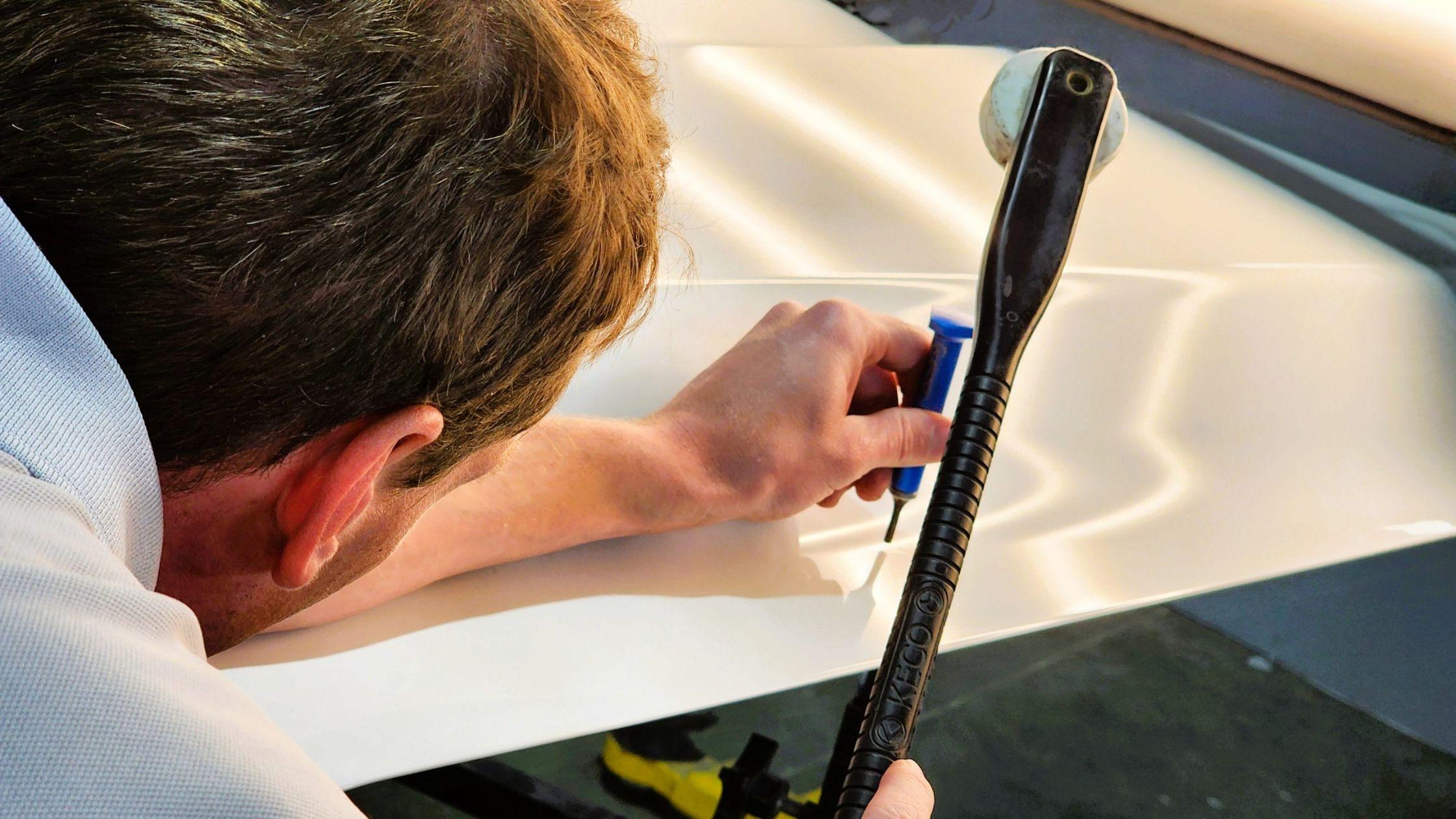Why Post-Accident Paint Matching Is Trickier Than It Seems

After an accident, most drivers focus on dents, scratches, and parts that need fixing. But one of the toughest jobs comes after the repairs. Matching the paint. It sounds easy. Just use the same code from the car’s manufacturer, spray it on, and the car looks like new, right? That’s the idea. But real life isn’t that simple. Paint matching is more art than science. Even with codes and charts, matching a car’s original color perfectly can be one of the hardest parts of body repair.
At a collision center in Independence, experienced painters know that color isn’t just color. It's a mix of shade, depth, finish, and reflection. Two cars from the same year, same model, same paint code—can still look slightly different parked side by side. The reason? Time, light, wear, and even factory conditions can all affect how paint settles and fades.
Factory Paint vs. Real-World Paint
Car manufacturers use robotic systems to paint new vehicles. The paint is baked on in controlled booths. The temperature stays steady. The humidity is perfect. Every part of the process is timed.
But once the car leaves the plant, that perfect finish starts to change. The sun hits it. Dirt collects. Road salt builds up. Washing methods vary. Over time, the paint fades or shifts slightly. A car that’s five years old, even if it still looks sharp, will not match fresh paint straight out of the can.
That’s why paint codes only get a technician part of the way. They give a base formula. From there, it takes training and a sharp eye to adjust the color to match what’s on the car right now—not what it was when it left the factory.
The Human Element in Paint Mixing
Computer systems help mix formulas. They make things faster and more precise. But they can’t see what the eye can. The final step in perfecting a match often comes down to the person holding the spray gun.
Painters may tint the base formula slightly. Add a bit more pearl. Soften the edge. Blend toward the next panel. It’s all based on what they see and how the finish reacts on the car.
Good painters also consider how clear coat will change the look. Some paints appear darker or richer once clear coat is applied. Others shift tone entirely. The skill comes from knowing how that final layer will change the appearance. That’s not something a computer can guess.
Blending: A Necessary Trick
Even when the color match is nearly perfect, the painter will often blend the color into nearby panels. This isn’t a shortcut. It’s the only way to fool the eye.
The goal isn’t to make the new paint identical to the old one. That’s not always possible. The goal is to make it impossible to see where the new ends and the old begins.
Blending involves fading the paint outward, spraying just enough over the next panel to soften the transition. The clear coat is then applied evenly to smooth the surface. Once polished, the car looks like it was never touched. But it took a lot of invisible work to get there.
Why Some Repairs Age Poorly
Not every repair lasts. If a shop doesn’t match paint properly, the difference becomes more visible over time. Poor blending leads to lines where the paint stops. Incorrect formulas fade faster.
Sometimes shops use cheaper paints or skip steps to save time. Those jobs might look okay for a few months, but the issues show up later. That’s why working with experienced teams matters.
People looking for collision repair in Independence, MO should always ask what process the shop follows for paint matching. Quality materials, trained painters, and proper blending are all signs of a reliable repair.
Time, Cost, and Skill
Paint matching takes time. That’s why it’s often one of the longest parts of a body repair job. It’s also why it costs more. The labor involved is careful and detailed.
Shops that do high-end paint work will often walk the car outside before signing off on it. They’ll inspect every angle. Look at it in sunlight. Try to spot any change in color or texture. The goal is to deliver a finish that no one notices—which is the highest compliment a painter can get.
Conclusion: Why Precision Matters After an Accident
For over 25 years, Auto Beauty Center has been the go-to name for professional body and paint services in Independence, MO. Their team knows how much detail goes into making a car look untouched after a repair.
They offer full-time paintless dent repair, full body repair, and expert paint matching—all at one location. Their work isn’t rushed. It’s precise. Every color match is done with care, using high-quality materials, professional-grade tools, and expert eyes.
They also provide roadside assistance, adding peace of mind to their service. Drivers who trust Auto Beauty Center know they’re getting more than a repair. They’re getting quality that lasts.
Their reputation comes from real results. From color blends that disappear into factory panels to clear coats that shine without flaw. Every job reflects the skill they’ve built over decades.
- Art
- Causes
- Crafts
- Dance
- Drinks
- Film
- Fitness
- Food
- Juegos
- Gardening
- Health
- Home
- Literature
- Music
- Networking
- Other
- Party
- Religion
- Shopping
- Sports
- Theater
- Wellness



